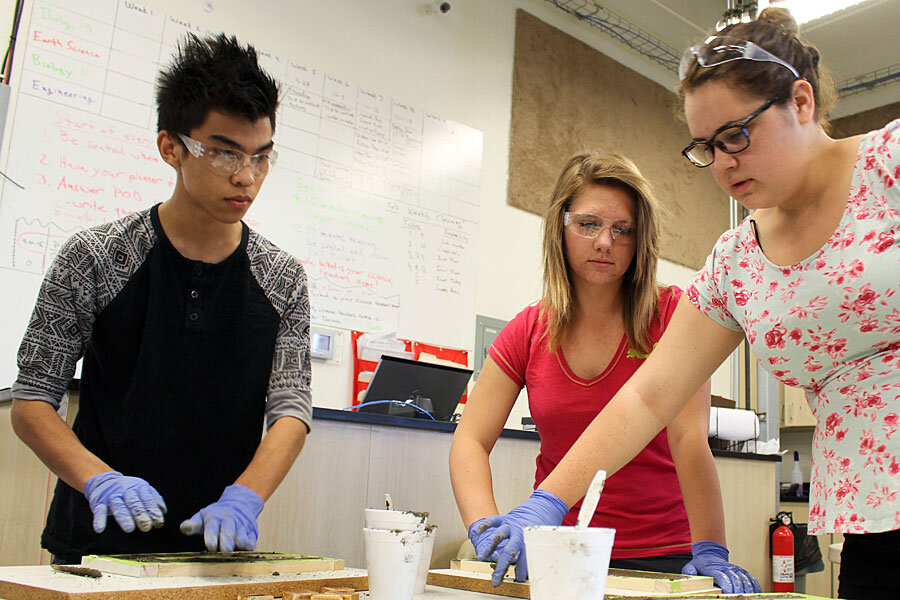Hit the snooze: Illinois high school starts later so students can sleep
Loading...
A Chicago-area school will now join the ranks of hundreds of other schools across the country that have adopted a tiny but powerful revision in their schedule: a later start time for classes.
Stevenson High School in Lincolnshire, Ill., will push classes back 25 minutes, to 8:30 a.m., starting in August 2016. Following the recommendation of the American Academy of Pediatrics (AAP) and a handful of other groups, the school board voted to approve the change Monday.
“There are three main reasons why we wanted to start our day later,” Stevenson principal Troy Gobble explains in an announcement video. First of all, he says, “we’ve been looking at the research on teenage sleep. The AAP, which is a leading organization on teenage health, has made it very clear that teenage students should not start school before 8:30. And we know from surveys of our own students that many of them don’t go to bed until after 11 o’clock on school nights, so there are many students who are probably getting six hours of sleep or less.”
According to the report he cites, delayed school start times – the Academy recommends 8:30 a.m. or later – will serve as “an effective countermeasure to chronic sleep loss and has a wide range of potential benefits to students with regard to physical and mental health, safety, and academic achievement.”
This data, however, is not new. Information about the consequences of insufficient sleep among teenagers has existed since the 1990s, Stacy Simera, the outreach director of the nonprofit Start School Later, tells The Christian Science Monitor.
“It’s taken time to trickle down,” Ms. Simera says. “If only people would read the journals, they’d see that physicians, nurses, and social workers all support it.”
Opponents of the measure, she adds, tends to bring up two things: the inconveniences of bus rescheduling, and pushing afternoon sports later in the day.
In 2014, the University of Minnesota's Center for Applied Research and Educational Improvement concluded a three-year project that looked at school start times and student grades, finding that among 9,000 students from eight high schools in three states, academic performance and standardized testing improved in more than one subject. Tardiness also decreased, and at one school, the number of teen car crashes dropped by 70 percent.
When schools start as late as 8:55 a.m., over 65 percent of students will able to sleep eight or more hours per night. For schools that begin at 7:30 a.m., the study shows, only 34 percent do so.
The first study that proved a causal relationship between academic performance and start times, Simera says, was one that examined students at the US Air Force Academy, published in the American Economic Journal.
With access to controlled variables including random class and scheduling assignment, mandatory attendance, and background data on students allowed researchers to analyze directly causal trends – that starting the school day just 50 minutes later leads to significantly higher student achievement.
During puberty, adolescents experience a shift of up to two hours in their circadian rhythm, resulting in a difficulty in falling asleep early, and hence waking up early as well. Consequently, many teens suffer from insufficient sleep, which then interferes with their performance in school.
“The adolescent body does not begin producing melatonin until around 11 pm and continues in peak production until about 7 am, then stops at about 8 am,” the 2011 US Air Force Academy study says. "Therefore, waking up a teenager at 7 am is equivalent to waking up an adult at 4 am."
For Simera, the most visible impact of insufficient sleep was depression. As a social worker, she observed in her mental health counseling that symptoms of clinical depression, anxiety, and suicidal thoughts among teenagers would naturally improve during the summer. After making the connection between sleep loss and mental health about six years ago, she says, “I thought, boy, something needs to happen.”
For some parents, however, the proposal for later class times raises concern for other reasons for sleep deprivation – namely, homework.
“As the mom of four boys ages 10, 15, 19, and 20, who has seen teen schedules overloaded with extra-curricular activities, sports, homework, jobs, and socializing (which is also important),” the Monitor’s Lisa Suhay wrote last year, in response to the AAP study, “all pushing bedtime later into the night, I wonder if this is more about shifting around the slices of a pie, rather than deciding the pie’s just too small to go around.”
In addressing the issue of workload, some schools have gone as far as eliminating homework. Gaithersburg Elementary School in Rockville, Md., for instance, has replaced the traditional concept of homework with the request that students simply read for 30 minutes every night. According to school principal Stephanie Brant, it’s working out pretty well.
Although Start School Later has no official stance on the implementation of homework, Simera says better sleep will invariably lead students to do a better job on homework.
As for the other two reasons for Stevenson High School’s decision, it’s a matter of optimizing functionality. With an extra 25 minutes, teachers can afford to better collaborate with their colleagues and students can meet with their teachers for tutoring. Today, schools in 43 states have made the transition to a later start time.








